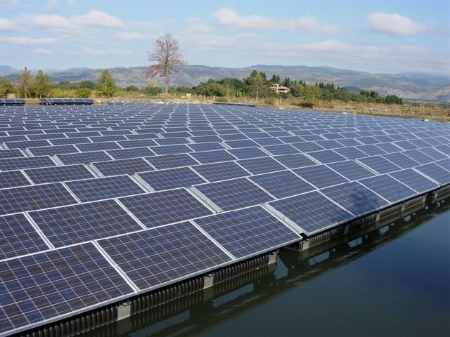India has begun an investigation into the alleged practice of Chinese solar cell and module manufacturers dumping their produce into the country to drive down solar PV prices to unfair and uncompetitive levels in order to gain a dominant market share.
India’s Directorate General of Anti-Dumping (DGAD) published a short missive late last week confirming that it had identified a “causal link” between allegations of Chinese, Taiwanese and Malaysian dumping and injuries sustained by Indian solar companies.
The official probe follows a petition filed in June by the Indian Solar Manufacturers Association (ISMA) calling for the government to act to stem what it claimed was the unfair importation of “solar cells, whether or not assembled in modules or panels or on glass or some other suitable substrates origination in or exported from China, Taiwan and Malaysia”.
The DGAD will now take into consideration whether there is cause to introduce anti-dumping (AD) duty to solar cells originating from these countries, and also to determine an appropriate AD tariff “adequate to remove the injury to the domestic industry”, the DGAD initiation document said.
Proceedings began last Friday when the DGAD informed the Chinese embassy in India of its intention to begin the AD proceedings. The findings of the investigation will be submitted to India’s Ministry of Trade and Commerce. In June, following the filing of ISMA’s petition, it was reported that the recommended AD tariff to be levied should range from $0.11 to $0.81 per watt.
Industry surprise
This latest investigation is not the first time India’s solar industry has sought to stem the flow of Chinese produce entering the country. In 2014 an initial AD petition was filed but ultimately rejected by the Ministry of Finance, which scuttled the petition after a two-year investigation into the alleged practice.
An earlier case against U.S. and European manufacturers was also filed and rejected outright. These precedents had led many industry experts to expect a similar response to this latest petition. In June, Mercom Capital CEO Raj Prabhu remarked that the government would be “highly unlikely to disrupt project development activity right when it is taking off and willing create uncertainty in the markets when investors are warming to India’s solar sector”.
The issue is, however, a thorny one for government. On the one hand it knows that the swiftest route towards its ambitious 100 GW of solar by 2022 goal is to stay the course and allow the continued dominance of Chinese solar companies supplying the domestic market (around 90% of installations in India are built using Chinese-made solar modules). On the other hand, its Make in India program seeks to support domestic manufacturing wherever possible, and has made some breakthroughs at national auctions that demand certain portions of PV capacity are built using domestic content.
With solar prices tumbling to record lows (dipping to INR 2.44/kWh or $0.038/kWh at the Bhadla Solar Park auction in Rajasthan in May), the dichotomy and divisions facing India’s solar sector remain stark: lower prices enabled by cheaper Chinese solar modules support installation growth, but if components become too cheap and tenders too low, developers could be scared away by the perceived lack of viable returns on investment.
Mercom Capital data published earlier this year shows that India’s solar export and import activity for Fiscal Year 2016-17 reached $1.22 billion, of which more than $1 billion was spent on importing solar materials – the bulk of which came from Chinese firms. Indian-made module prices remain higher than Chinese modules, with ASPs of around $0.38/W compared to approximately $0.36/W for Chinese modules.
These figures highlight the current imbalance in India’s solar industry, and the role China has played in driving down cost and boosting installation rates. Ostensibly, this is a good thing, but India’s government knows the dangers of such dominance, and has now – it would seem – taken decisive, if not altogether welcome, action.
In the U.S., a recent challenge to court rulings focusing on the scope of what actually denotes solar cells and modules that attract tariffs was shot down, but there remains the possibility that the Section 201 petition – brought by Suniva and backed by SolarWorld Americas – could see the International Trade Commission (ITC) side with the complainants. Should this happen, and the ITC find that damage has been done to the domestic U.S. solar industry by Chinese imports, then any measures taken will be determined by the current Trump Administration – an administration that has repeatedly vowed to end the practice of Chinese dumping.
This content is protected by copyright and may not be reused. If you want to cooperate with us and would like to reuse some of our content, please contact: editors@pv-magazine.com.



1 comment
By submitting this form you agree to pv magazine using your data for the purposes of publishing your comment.
Your personal data will only be disclosed or otherwise transmitted to third parties for the purposes of spam filtering or if this is necessary for technical maintenance of the website. Any other transfer to third parties will not take place unless this is justified on the basis of applicable data protection regulations or if pv magazine is legally obliged to do so.
You may revoke this consent at any time with effect for the future, in which case your personal data will be deleted immediately. Otherwise, your data will be deleted if pv magazine has processed your request or the purpose of data storage is fulfilled.
Further information on data privacy can be found in our Data Protection Policy.